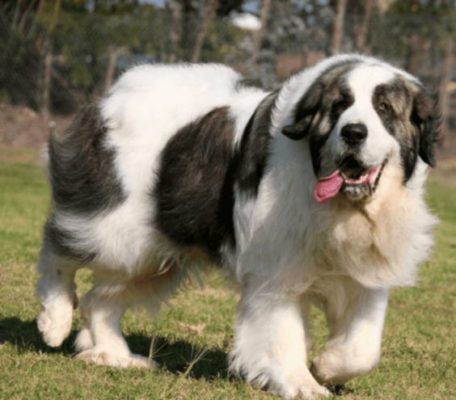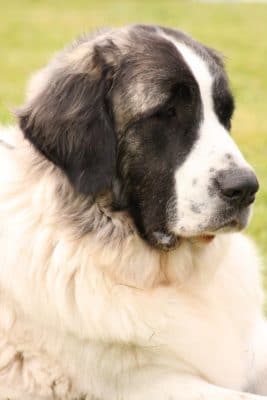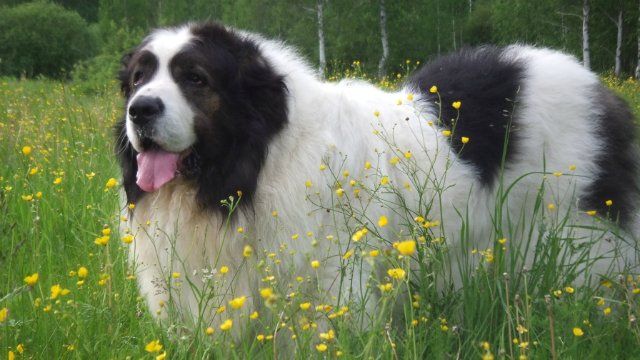Pyrenean Mastiff
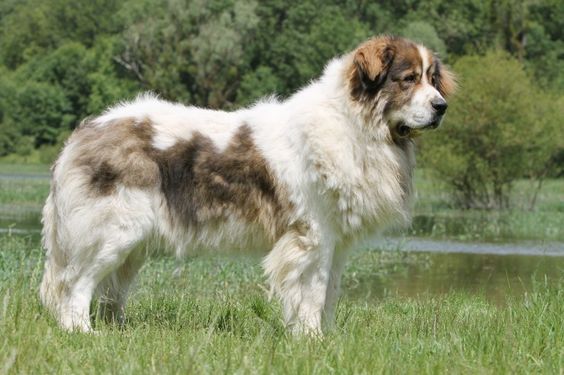
The breed is an exceptionally balanced, reliable, and intelligent dog. Despite its size, the Pyrenean Mastiff is a good-natured dog. But at the same time, it can easily scare away intruders who threaten the owner and family. That is why quite often, the Pyrenees is used as a bodyguard. Regarding other pets and animals, he behaves calmly.
Table of Contents
Breed Information
| Another Name | Mostín d’o Pireneu (Aragonese), Mastín del Pirineo (Spanish) |
| Origin | Spain |
| Height | Males 77-81 cm Females 72-75 cm |
| Weight | 54-70 kg |
| Fur | Long |
| Color | White and beige, white and black, white and brown, white and silver |
| Lifespan | 10-13 years |
| FCI Classification | Pinscher and Schnauzer – Molossoid and Swiss Mountain and Cattledogs |
| Group | Protection dogs (guard dogs) |
| Price | From $700 |
Breed Photos
Origin History
The breed’s history begins long before our era when ancient Molossoid dogs served Asian traders in southwestern Europe. The Pyrenean Mastiff played a significant role in shepherds’ lives, acting as a constant assistant on farms.
Pyrenean Mastiffs were so smart and versatile that they managed to graze cattle and reacted very quickly if it was necessary to stand up to protect the herd or the shepherd from attacks and robbery.
The breed standard was officially registered in Spain in 1946. The breed dates back to 1890, where three Pyrenean Mastiffs were successfully presented at an exhibition in Madrid. However, during the years of war and difficult economic situations, the number of individuals decreased significantly. The situation remained tense until the 70s. And only in 1974, the Iberian Mastiff again rushed into the shows with resounding success and cemented its popularity. The standard began to “develop” anew; the breeders tried to preserve the breed’s purity as much as possible. In Spain, in 1977, the Iberian Mastiff Club was organized. In 1981, the Royal Society of the Dog Breed approved the breed’s new standard, which the International Canine Federation acknowledged.
Appearance
The Pyrenean Mastiff looks very harmonious. It is a big, powerful and muscular dog. The head is large, and the muzzle is oblong. The characteristic color of the muzzle is a black or dark brown mask. The coat is long, bristly, white. The body may have spots, which coincide with the color of the mask. Ears set high, floppy. The tail is long.
Character
The breed is an exceptionally balanced, reliable, and intelligent dog. Despite its size, the Pyrenean Mastiff is a good-natured dog. But at the same time, it can easily scare away intruders who threaten the owner and family. That is why quite often, the Pyrenees is used as a bodyguard. Regarding other pets and animals, he behaves calmly.
Because of his shepherding background and developed instincts, the Pyrenean has a strong character. The dog can make his own decisions; in some cases, it seems independent. The owner of such a dog should not be timid, have leadership qualities so that the training will go without problems. It is vital to show your active, dominant position so that you have the opportunity to influence the formation of the pet’s character.
The ideal condition for living in your own home. After all, such a dog needs space and plenty of room for a comfortable sense of self. The Pyrenean Mastiff loves attention and makes it hard to be away from his family for a long time. So if you have a busy work schedule, consider getting a dog of another breed. The Pyrenean will, of course, faithfully wait for you at home, but it will be awful for his mental health. The dog will be in a constant state of loneliness and homesickness.
Care
The Pyrenees will feel at least uncomfortable in an apartment environment because of their size and personality. Therefore, you better create a comfortable environment for yourself and your pet. Long walks are recommended. Constant exercise is not necessary but desirable to keep in shape. Ideally, if your physical form matches your dog’s, you will be 100% on the same page.
The hair of Pyrenean Mastiffs is thick and long, so regular brushing and bathing are needed. It’s better to comb it out with a special brush several times a week so that your house doesn’t turn into one big white carpet of your pet’s luxurious hair. Here are the standard recommendations: keep an eye on the ears, check them a couple of times a week, trim the claws once or twice a month. Pay more attention to the eyes – the Pyrenean Mastiff has a weak spot.
Training
The Pyrenean Mastiff has perfectly developed qualities of a watchdog, guardian, and protector. Of course, commands of this kind will be given to him with ease. In education and training, early socialization is essential to form a good character. The movement will be easy, but you will need time, stamina, and patience to raise a decent dog in any case.
Common Diseases
The Pyrenees are known for their excellent health. Dogs of the breed are not prone to hereditary diseases, but there is a risk of such diseases:
- eye infections (conjunctivitis);
- hip dysplasia (be sure to test periodically for this condition in your pet).
Nutrition
When formulating the diet, remember that the Pyrenees are prone to obesity, so be careful. Feed your pet only natural foods with vitamin supplements. Be sure to include foods that contain protein and calcium; they will help build the musculoskeletal system. If you give preference to food, consult experienced breeders and choose high-quality food not to harm the dog’s health.
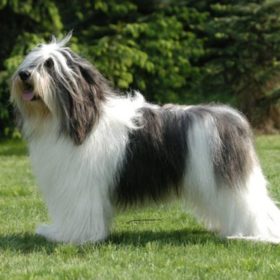 Polish Lowland Sheepdog
Polish Lowland Sheepdog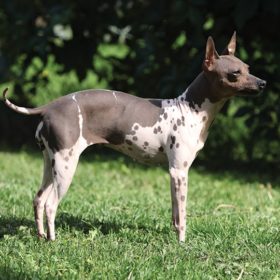 American Hairless Terrier
American Hairless Terrier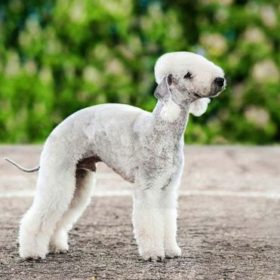 Bedlington Terrier
Bedlington Terrier Miniature Pinscher
Miniature Pinscher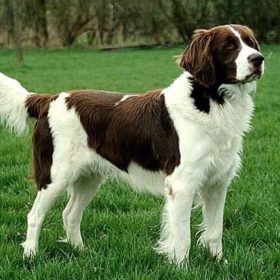 Drentse Patrijshond
Drentse Patrijshond Belgian Shepherd Laekenois
Belgian Shepherd Laekenois